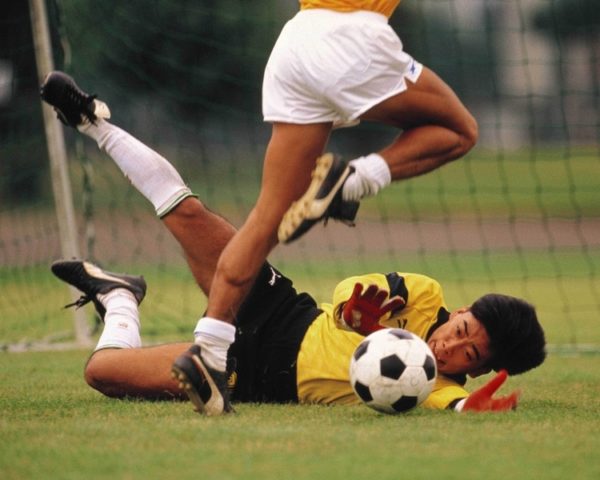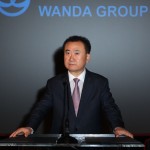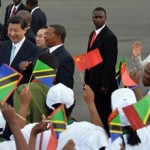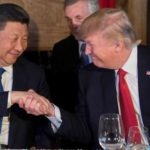The Football Market in China: A Rising Popularity
The Football Market in China
This year, Xi Jinping, China’s president, published a fifty-point plan to promote football in China. China is currently ranked 81st in the world according to FIFA’s official standings. Nevertheless, a strategy has been formulated to push China to the top. By 2050 China should be ‘a first-class football superpower’ capable of winning the world cup. This article will explore how the Chinese government intends to achieve their lofty aspirations. It will also underline the opportunities this development presents for both foreign and native businesses. It will commence by demonstrating how the Chinese government is stimulating unprecedented interest in the sport. It will then proceed to highlight new market opportunities emerging in the sector. Before concluding, it will illustrate which businesses are already exploiting the football market in China
Football Market in China: New Trends
Since the Chinese government announced their aspirations to produce a world cup winning football team, a flood of investment has entered the Chinese domestic football league in order to popularize and glamorize the sport. During the January transfer window in 2016, the Chinese transfer record was broken three times to bring players from Europe’s top leagues to China. This trend culminated in the £38 400 000 transfer of Alex Teixeira from Shakhtar Donetsk, a Ukrainian club, to Jiangsu Suning. They fended off bids from illustrious European clubs, such as Liverpool, to secure Teixeira’s services. Noteworthy is that the movement of players is one-way. Whilst this is partly due to the insufficient quality of Chinese players to play for elite European clubs, it is also because Chinese clubs are owned by corporations keen to help the Chinese government deliver their targets. To increase the popularity of the sport, the government realize that they must generate interest in their domestic league. Consequently, investment is being plunged into the Chinese Super League. The market has so much potential that an investor paid $1 300 000 000 for the exclusive television broadcast rights for five years, a deal that now looks to be a bargain. Businesses are working with the government to build the sport in China. They are investing in the league, whilst protecting it. This financial activity is stimulating national interest in the sport.
Challenges for the Football Market in China
 A strong domestic league full of imported players, however, will not necessarily produce a skilled national team. The Chinese government, therefore, are prioritizing football at grass roots levels too. Indeed, as part of the 2016 to 2020 National Fitness Program, the sports will enter the general school curriculum for the first time. China is already home to the world’s largest football school which is worth $185 000 000 and educates 2 800 students per year. Over the next decade, the government will erect 50 000 more schools. They hope that by 2020 50 000 000 Chinese citizens will play football regularly, with 30 000 000 of those set to be children. Tom Byer, the man deemed responsible for developing the popularity of football in Japan, is working closely with China’s ministry of education to ensure their objectives are met. With huge numbers expected to start playing football in China and significant investment being driven into China’s domestic league, the government will stimulate interest in the sport.
A strong domestic league full of imported players, however, will not necessarily produce a skilled national team. The Chinese government, therefore, are prioritizing football at grass roots levels too. Indeed, as part of the 2016 to 2020 National Fitness Program, the sports will enter the general school curriculum for the first time. China is already home to the world’s largest football school which is worth $185 000 000 and educates 2 800 students per year. Over the next decade, the government will erect 50 000 more schools. They hope that by 2020 50 000 000 Chinese citizens will play football regularly, with 30 000 000 of those set to be children. Tom Byer, the man deemed responsible for developing the popularity of football in Japan, is working closely with China’s ministry of education to ensure their objectives are met. With huge numbers expected to start playing football in China and significant investment being driven into China’s domestic league, the government will stimulate interest in the sport.
Aside from the sporting implications, the growth of the football market in China will produce an array of business opportunities. Euromonitor International predict that between 2015 and 2020 the value of sports apparel in China will rise from 87 100 000 000 RMB to 121 500 000 000 RMB. Meanwhile, they also estimate that sports footwear sales will grow 78 000 000 000 to 125 100 000 000 RMB and that overall sportswear sales will increase from 165 000 000 000 RMB to 246 700 000 000 RMB. When one considers the number of people that will start playing football in the coming decade and the money that is being pushed into the Chinese domestic league, it is no surprise to see these figures. It will generate unprecedented demand for football related products and services. Indeed, in the last quarter of 2015, Nike’s footwear sales in China rose by 30% from the previous year. This will certainly be aided by an unprecedented demand for football boots.
Alibaba Group, a company that provides sales services via web portals, is already taking advantage of these new market trends. In September 2015 they launched Alisports. It is an offshoot of the original group and aims to use data about the millions of Alibaba users to encourage them to spend money on sports events, merchandise, and equipment. The CEO of Alibaba Group, Zhang Dazhong, said that ‘down the line, the consumption or money spent on sport will be much more than other commodities.’ Accordingly, they want to exploit new opportunities. The rise of the football market in China is a development Alibaba are well positioned to take advantage of. They will be a medium through which football equipment and services are sold. Adidas are also plotting a strategy to make further profits in China. They want to expand their retail network in the mainland from 9 000 stores to 12 000 by 2020. Indeed, they will need the space to supply the additional demand. Although Alibaba and Adidas are established corporations, the growth of the Chinese football sector will create opportunities for new businesses to innovate too.
To conclude, Xi Jinping wants China to become ‘a first-class football superpower’. By encouraging investment in China’s domestic football league, the Chinese government is generating national interest in the sport. In addition, they are creating football schools across the country that will increase the number of children playing the sport. Whilst Jinping might be more concerned with China’s sporting performance, there will also be an unprecedented demand for football related products and services. It is a trend established brands, such Adidas, are already preparing for. Equally, it will present opportunities for new businesses. It is a trend worth following for any company involved in China’s sports industry.
Case Study: Sport Industry
A leading sports company was seeking to develop new products adapted to Chinese consumers. They contacted Daxue for product testing with sensory analysis. Product testing,also called consumer testing, is the process of measuring the performance and the properties of a product when used by consumers. Daxue conducted this product testing methodology among 62 participants with varying sports levels, from beginners to professionals, to test fitness equipment such as dumbbells and exercise mats. The products were tested during and after the practices to gauge the fit and comfort of the products.
The tailored report helped the client to understand the customers and to adapt its products to Chinese consumers’ demands.
Follow us on Twitter to see the latest post on China’s market:
#China ends one-child policy: will this change reshape demographics? #ChineseConsumershttps://t.co/a0uQ0owNYf
— Daxue Consulting (@DaxueConsulting) October 30, 2015



![[Infographic] China Football Industry: Trends and Opportunity](../wp-content/uploads/2016/12/Screen-Shot-2016-12-13-at-10.15.39-AM-150x150.png)











